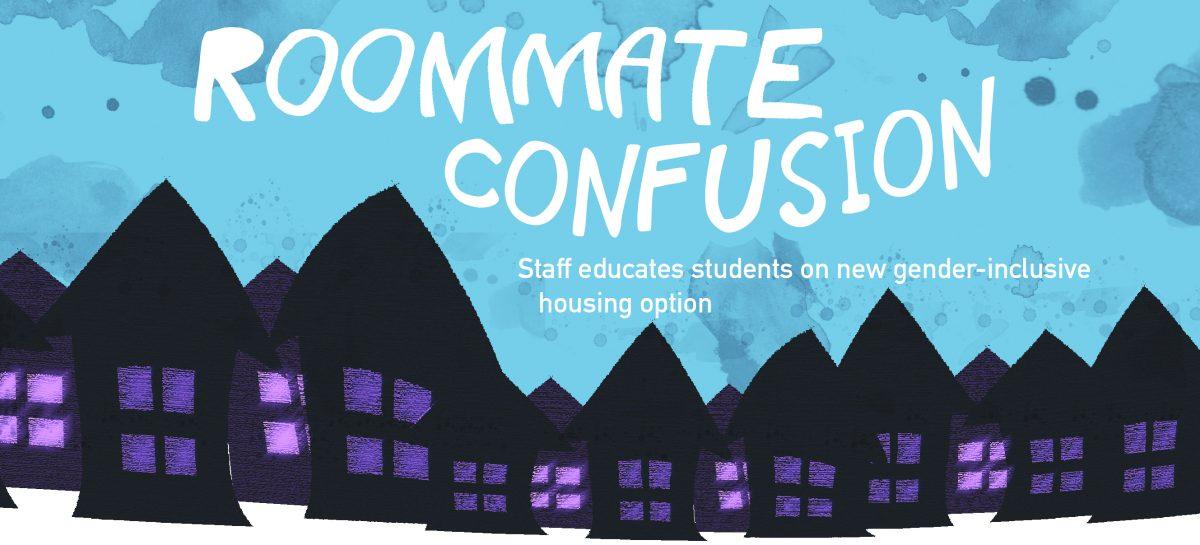Editor’s Note: This article was updated to clarify ATEC junior Emily Wheeler visited the University Village Leasing Office and not the Galerstein Gender Center.
After establishing the gender-inclusive housing option last semester, UTD staff are preparing for the fall semester by addressing any problems students have with their room assignments.
Director of Residential Life Catherine Pickrel and Matt Johns, assistant director for LGBT+ programs at the Galerstein Gender Center have been working through the implementation process. UTD is the first UT System school to formally adopt a gender-inclusive housing option, and recently received four and a half out of five stars on the Campus Pride Index, which is the premier LGBT+ national benchmarking tool for colleges and universities to create safer, more inclusive campus communities.
Pickrel said as of now, 18 percent of first year applicants and 26 percent of non-first year applicants have opted into gender-inclusive housing.
“Traditionally, we have placed students together based off their gender in the university system,” Pickrel said. “If a student opts into gender-inclusive housing a student can be placed with another student who also opted into gender-inclusive housing. This is done without regard to biological sex or gender identity.”
ATEC junior Emily Wheeler said she ran into trouble with the roommate assignment after applying for housing. She and her friend wanted to room together and went through the process, but discovered they couldn’t select the same room and were separated. When they received their room assignments, Wheeler discovered her housemate was male, which made her uncomfortable.
When Wheeler heard about the gender-inclusive housing option, she was under the impression that by selecting the box on the application, the applicant is fine with rooming with someone who identifies as a different gender.
“We both clicked yes on the form for gender-inclusive, not aware that it meant anybody who selected that option can be roomed with you,” Wheeler said. “We didn’t realize you could be roomed with a guy, we thought it was if there was a special circumstance where someone identified as a woman.”
As her interpretation of the policy did not align with what the housing office meant, Wheeler’s solution was to send emails and visit the housing office to solve her dilemma.
Despite her visiting the housing office three times, she was turned away with no immediate fix to her situation.
“I went into their office multiple times to try and talk about how we can fix the situation and possibly live together or at least get me out of having to live with a guy for a roommate,” Wheeler said. “Every time we went in to talk they just said, ‘Have you emailed?’ and that they would get back to us but they just never did and it was very unhelpful.”
After attempting to remedy her issues, Wheeler was given the option to decline the current housing offer and go on a waitlist. Even though her living situation worked out, she said it is not fair that her friend is still stuck with a male roommate and the problem might not be the Gender Center, but the application itself.
“I understand they probably have a lot of people who are having issues and so it’s kind of hard for them to talk to everybody, but from my perspective, it seems like maybe there is something wrong with the system rather than everyone is messing up,” Wheeler said.
Catherine Pickrel said that if students are running into problems with the process and do not get a response to their email, she encourages them to contact her directly.
She also said Galerstein Gender Center is working to educate students on gender -inclusive housing through staff training, follow up emails and including information during housing tours.
“We are communicating about gender-inclusive housing in multiple ways,” she said. “As with any new program or procedure, we are always open to suggestions and strive to always improve our communication methods.”











